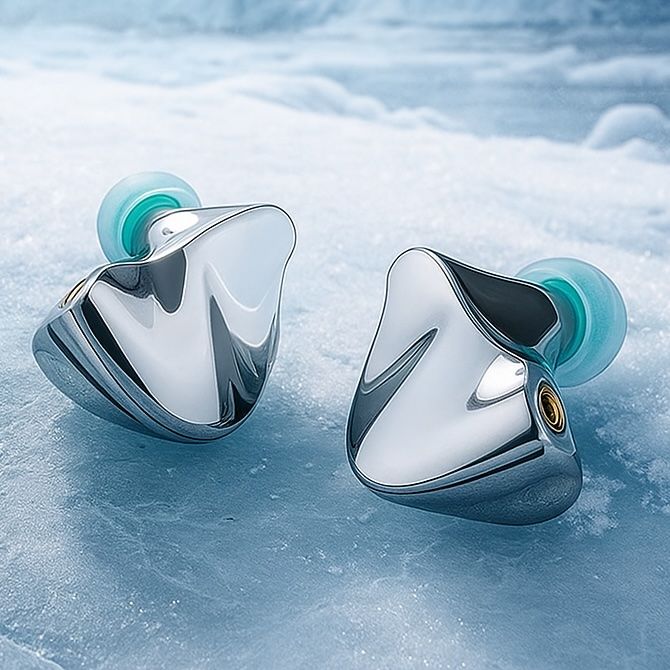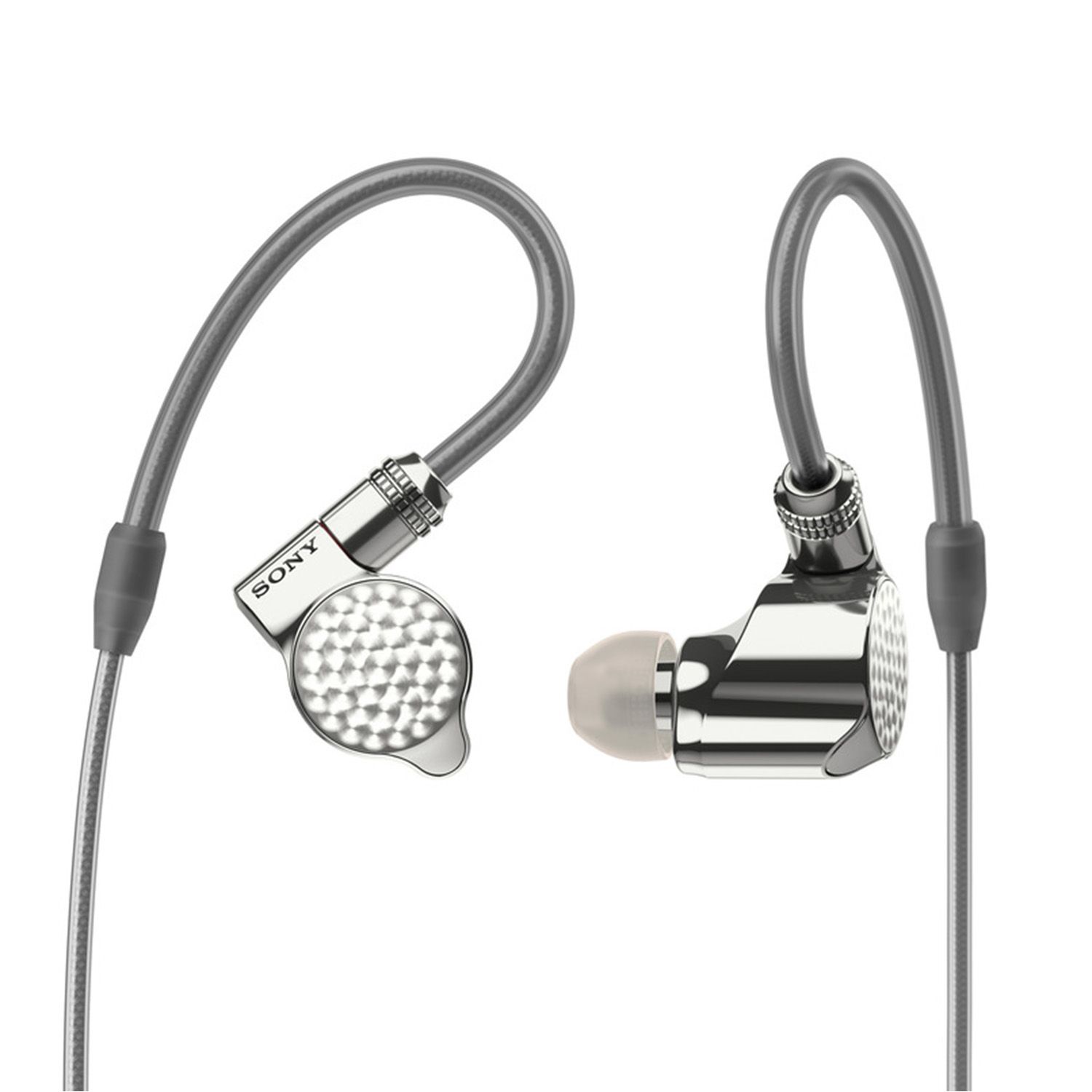Glaciervs.IER-Z1R
Sound & Specs Comparison
Information
Both IEMs are widely regarded in the audiophile community. See how they differ in terms of sub-bass response, upper mids, clarity, and overall tonality. Spider charts and rating breakdowns included.
Objective Comparison
Facts, details, stuff.
| General Info | Glacier | IER-Z1R |
|---|---|---|
| Brand | DUNU | Sony |
| Country | China | – |
| IEM Description | A powerful flagship 9‑driver tribrid IEM delivering impactful sub‑bass, detailed mids, and airy treble. Encased in mirror‑finished 904L stainless steel with DLC coating and equipped with a modular premium cable—built for both refinement and performance. | Despite their small size, the Sony IER-Z1R earphones feature a sophisticated 3-way design with two dynamic drivers and a highly precise balanced armature. The sound quality is not just high-resolution—it's ultra-high-resolution, reaching an impressive frequency response of up to 100 kHz. Housed in a precisely crafted, virtually resonance-free aluminum shell, the design ensures that all three drivers remain in perfect phase alignment. The cables are fully balanced and made from high-purity OFC copper with silver plating for maximum detail retrieval. |
| Price Level | 1.000 – 2.000 | 2.000 + |
| Housing & Driver | ||
|---|---|---|
| Driver Config | Tribrid | Hybrid |
| Driver Types | Electrostatic + Dynamic Driver + Balanced Armature | Dynamic Driver + Balanced Armature |
| Shell Material | 904L stainless steel with diamond-like carbon mirror finish | – |
| Cable | 8‑core monocrystalline copper with triple-layer insulation; white cloth sleeving | – |
| Technical | ||
|---|---|---|
| Freq Range | 5 Hz – 40 kHz | 3-100.000 Hz |
| Impedance (Ω) | 43 | – |
| Sensitivity (dB) | 109 | 103 |
| Crossover | Dual four‑way frequency crossover with acoustic/electronic control | – |
| Platform Info | ||
|---|---|---|
| Comments | 1 | 0 |
| Visit Count | 213 | 93 |
| External Reviews | 1 | 1 |
Meta Ratings
Compared to Glacier, IER-Z1R creates a measurably wider and deeper soundstage, giving each instrument more space and depth. For comfort fit, Glacier performs noticeably better (8.2 vs 6.8). Compared to Glacier, IER-Z1R’s cable exhibits subtly smoother handling, with fewer instances of memory or stiffness.
| Glacier | IER-Z1R | |
|---|---|---|
| Sound | 8.2 | 9.8 |
| Comfort Fit | 8.2 | 6.8 |
| Build Quality | 9.7 | 9.8 |
| Stock Cable | 8.0 | 8.5 |
| Accessories | 8.5 | 8.3 |
Sound Characteristics
IER-Z1R delivers m tighter sub-bass response, controlling low-end rumble with more precision than Glacier (9 vs 7.5). The low-end on It is a more controlled and rhythmic, offering better definition than Glacier (9 vs 7.5). It adds a more body and slam to bass hits, which makes it feel more physical than Glacier (9 vs 8). The lower midrange on It blends a more smoothly into the bass region, avoiding the disconnect found in Glacier (8.5 vs 7). Upper mids are a more resolving and expressive on It, revealing emotion and articulation better than Glacier (8.5 vs 7.3). It offers m greater shimmer and nuance in the lower treble, revealing micro-details that Glacier misses (9 vs 7.5). It captures ambient cues and reverbs a more precisely through its upper treble, enhancing spatial perception over Glacier (9.5 vs 8). The stereo field on It feels a wider and more holographic, whereas Glacier sounds more intimate (10 vs 8.5). It retrieves micro-details a more effectively, revealing nuances that are less apparent in Glacier (9.5 vs 9). In complex arrangements, It separates layers m more distinctly, preventing overlap that Glacier occasionally suffers (9.5 vs 8). It avoids frequency masking a more successfully, preserving clarity across the spectrum better than Glacier (9 vs 7.5). Notes played through It feel a weightier and fuller, giving a more satisfying impact than those from Glacier (9 vs 6). It delivers a stronger slam and physicality, making drums and transients hit harder than Glacier (9 vs 7.5). It handles sibilant sounds a more gently, with fewer peaks and less sharpness than Glacier (9.5 vs 8.5). Timbre on It sounds a more realistic and natural, whereas Glacier feels slightly more artificial or colored (9.5 vs 7.5). Tonality on It is s more coherent and refined, yielding a more pleasing overall signature than Glacier (9 vs 7). It portrays textures in vocals and strings with s more realism, enhancing emotional depth over Glacier (9 vs 7.5).
| Glacier | IER-Z1R | |
|---|---|---|
| Sub Bass | 7.5 | 9.0 |
| Bass | 7.5 | 9.0 |
| Bass Feel | 8.0 | 9.0 |
| Lower Mids | 7.0 | 8.5 |
| Upper Mids | 7.3 | 8.5 |
| Lower Treble | 7.5 | 9.0 |
| Upper Treble | 8.0 | 9.5 |
| Sound Stage Width | 8.5 | 10.0 |
| Detail | 9.0 | 9.5 |
| Layering | 8.0 | 9.5 |
| Masking | 7.5 | 9.0 |
| Note Weight | 6.0 | 9.0 |
| Slam | 7.5 | 9.0 |
| Sibilance | 8.5 | 9.5 |
| Timbre Color | 7.5 | 9.5 |
| Tonality | 7.0 | 9.0 |
| Texture | 7.5 | 9.0 |
Tonal Signature
// Nothing to compare yet.

